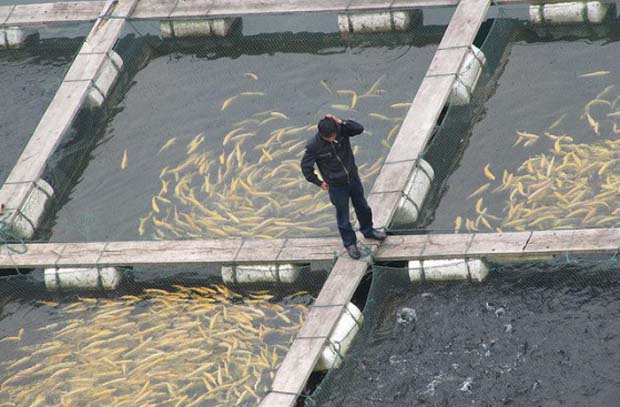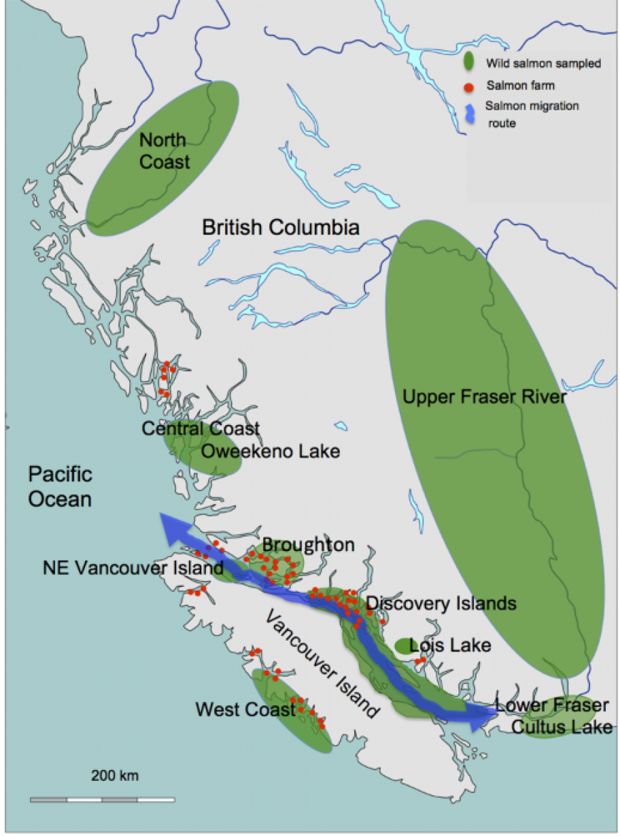 Scientists found the pathogen in both wild and pen-raised fish in British Columbia
Scientists found the pathogen in both wild and pen-raised fish in British Columbia
By Richard Conniff, author of The Species Seekers: Heroes, Fools, and the Mad Pursuit of Life on Earth and other books.
[dropcap]A[/dropcap] pathogen that is “arguably the most feared viral disease of the marine farmed salmon industry” has turned up for the first time in farmed and wild fish in British Columbia, according to a new study in Virology Journal. The authors warn that the presence of the virus, called infectious salmon anemia virus, could greatly increase the risk of devastating outbreaks for salmon fisheries from Alaska down to the Pacific Northwest.
“This is first of all a salmon virus and a member of the influenza family, and it mutates easily and rapidly,” said coauthor Alexandra Morton, an independent marine biologist. “There is no place in the world where this virus has existed quietly. It has always caused a problem. It was detected in Chile in 1999, and nothing was done to contain it. They allowed it to reproduce and mutate, and in 2007 a form appeared that swept the coast and caused $2 billion in damage.”
Advertisement
The B.C. Salmon Farmers Association promptly responded to the study with a fierce attack on its science. “We have great concerns about the methodology and the ethics of the researchers involved, given their history of reporting false positives with respect to ISA,” said Jeremy Dunn, executive director. “None of the results reported in this paper have been confirmed by an outside laboratory.”
Morton called the response unhelpful. “This is a dangerous virus to the industry and to the wild salmon, and we need to deal with this in a scientific way,” she said, adding that the fish farmers had denied her group access to farmed salmon for testing. “They deny everybody access. It really inhibits the work. You have to go and get the dying fish out of these farms and test them.”
Instead, Morton and her coauthors tested more than 1,000 farmed and wild salmon from British Columbia supermarkets and found evidence of ISAV in 78. The virus also turned up in sea lice from the Discovery Islands, a region known for salmon farms, raising concern that the pathogen was introduced from open-net fish farming.
The new study used PCR (polymerase chain reaction) technology, the standard technique for amplifying segments of DNA and identifying them as being from a particular species. But in a comment forwarded by the B.C. Salmon Farmers Association, Gary Marty, British Columbia’s chief fish pathologist, argued that the paper did not “provide a balanced review” of the thousands of past PCR studies on B.C. salmon that were negative for the virus. He also raised the “possibility of sample contamination” in the “cramped, untidy conditions” of the laboratory where the new PCR studies took place.



